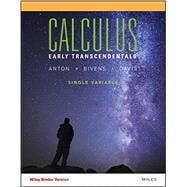Howard Anton obtained his B.A. from Lehigh University, his M.A. from the University of Illinois, and his Ph.D. from the Polytechnic Institute of Brooklyn, all in mathematics. He worked in the manned space program at Cape Canaveral in the early 1960's. In 1968 he became a research professor of mathematics at Drexel University in Philadelphia, where he taught and did mathematical research for 15 years. In 1983 he left Drexel as a Professor Emeritus of Mathematics to become a full-time writer of mathematical textbooks. There are now more than 150 versions of his books in print, including translations into Spanish, Arabic, Portuguese, French, German, Chinese, Japanese, Hebrew, Italian, and Indonesian. He was awarded a Textbook Excellence Award in 1994 by the Textbook Authors Association, and in 2011 that organization awarded his Elementary Linear Algebra text its McGuffey Award.








